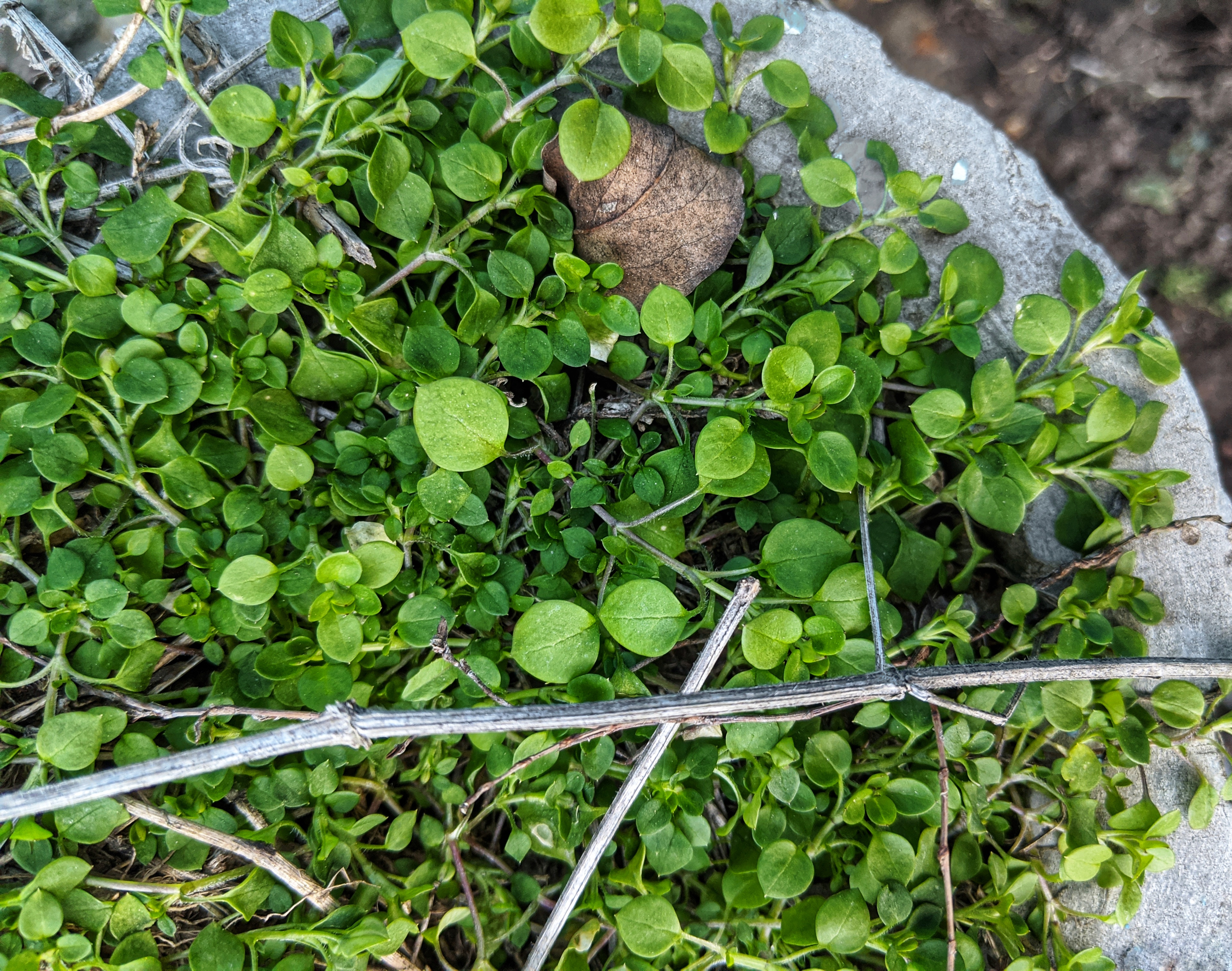Corsican mint
(Mentha requienii)

Description
Mentha requienii, or Corsican mint, is a herb and species of mint, native to Corsica, Sardinia, and mainland Italy, and naturalized in Portugal and in the British Isles. It is a very low-growing species with bright green leaves and a strong minty aroma. Corsican mint is one of the smallest members of the mint family. It grows to 3–10 cm tall, with small oval leaves 2–7 mm long and tiny mauve flowers in July and August that are insect pollinated. It has a strong aroma of peppermint. Corsican mint is native to Corsica, Sardinia, France and Italy. It has become naturalised in other parts of the world and is regarded as an invasive species in south eastern United States. Mentha requienii can be used in landscaping as a bedding plant, giving out a desirable mint smell when trodden on. Because it can indeed be walked upon without dying, it is sometimes used to line walkways, growing between stepping stones. Unlike most other cultivated mints, this plant stays diminutive and thrives in shady garden areas. However, if given too much moisture the leaves will rot. The best way to avoid this is to let the plant dry out between waterings, but not too much, because it is drought-sensitive. Baby's tears is used as a substitute in areas where Corsican mint is too fragile. Corsican mint, along with pennyroyal, is thought to be one of the best mints to grow as a companion to brassica plants like broccoli, cabbage, cauliflower, et cetera. It repels certain pest insects, in part by obscuring the smell of the crop to be protected, and may also enhance flavor. This plant is also used in cuisine, most famously as the flavoring in crème de menthe. It is sometimes said to have a scent similar to pennyroyal. Mentha (also known as mint, from Greek μίνθα míntha, Linear B mi-ta) is a genus of plants in the family Lamiaceae (mint family). The exact distinction between species is unclear; it is estimated that 13 to 24 species exist. Hybridization occurs naturally where some species' ranges overlap. Many hybrids and cultivars are known. The genus has a subcosmopolitan distribution across Europe, Africa, Asia, Australia, and North America. The species that make up the genus Mentha are widely distributed and can be found in many environments. Most grow best in wet environments and moist soils. Mints will grow 10–120 cm (4–48 inches) tall and can spread over an indeterminate area. Due to their tendency to spread unchecked, some mints are considered invasive.
Taxonomic tree:







